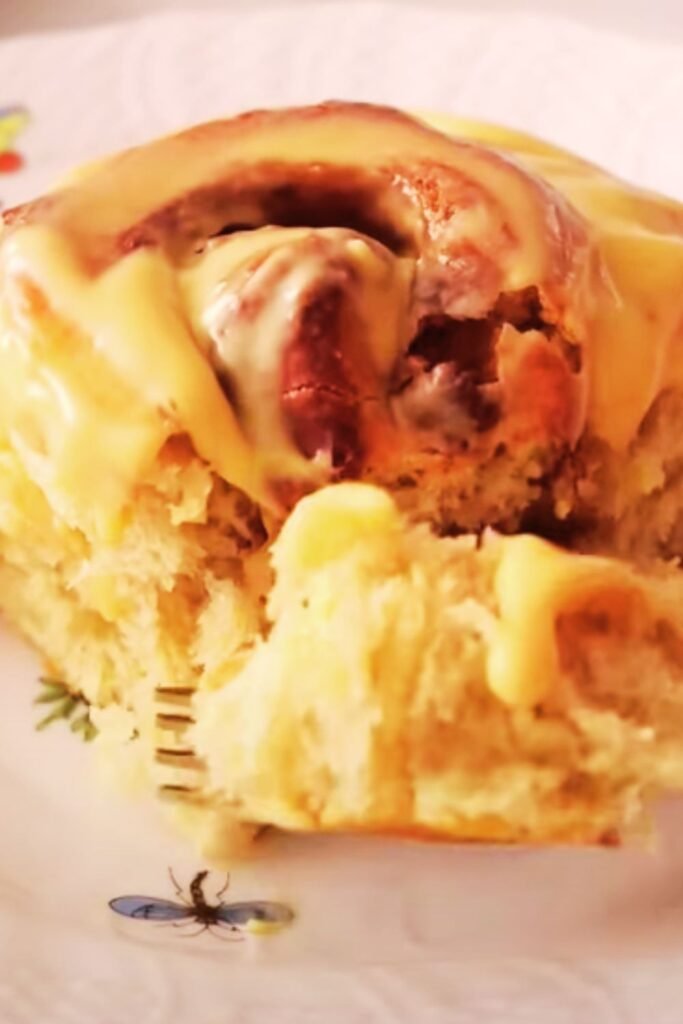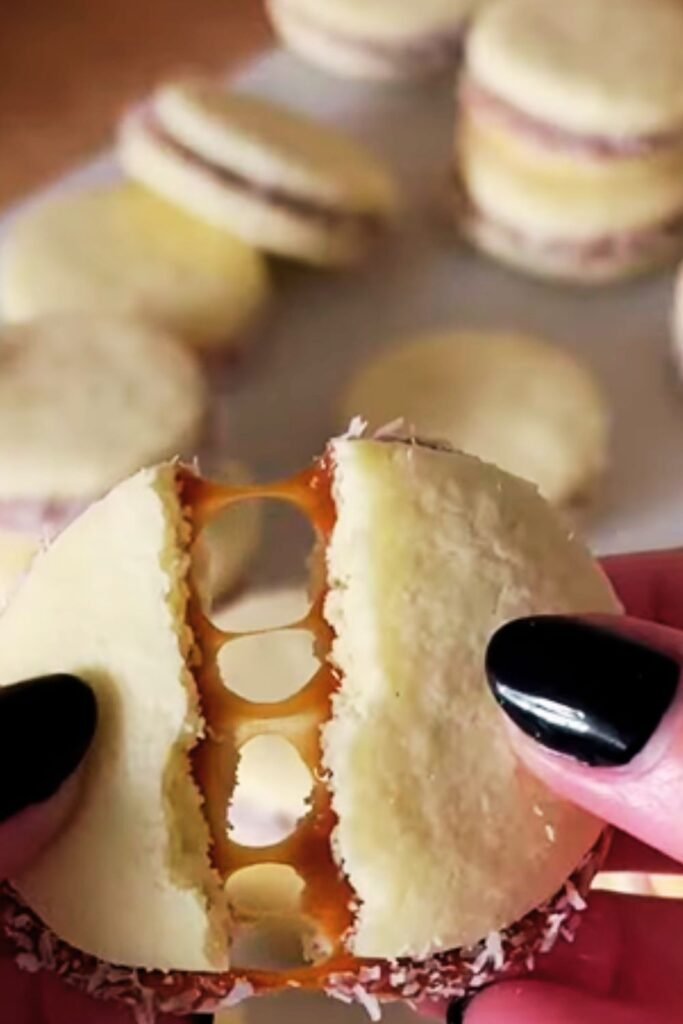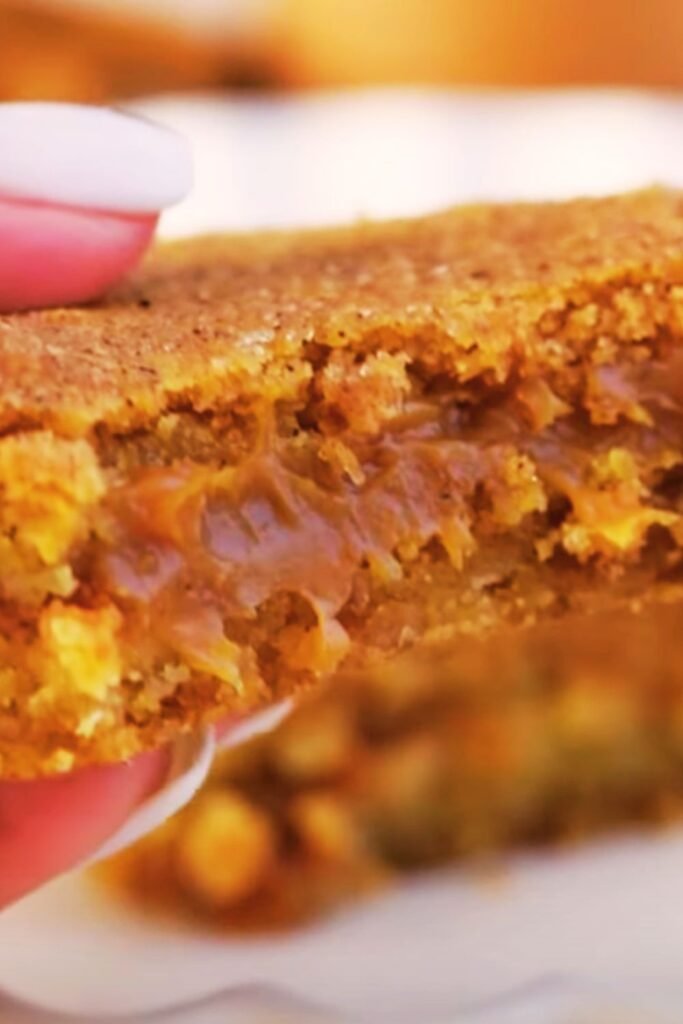I’ve been baking for over fifteen years, and let me tell you – few things make my kitchen smell as heavenly as these dulce de leche cinnamon sandwich cookies. The moment that warm cinnamon mingles with the rich, caramelized sweetness of dulce de leche, I know I’m creating something truly magical. These aren’t your ordinary cookies; they’re tender, buttery vessels that cradle one of the world’s most beloved confections.
When I first attempted these cookies three years ago, I made every mistake in the book. My dough was too wet, my dulce de leche leaked everywhere, and my cinnamon measurement was completely off. But through trial and error, I’ve perfected a recipe that delivers consistently amazing results. Today, I’m sharing everything I’ve learned so you can create these show-stopping treats without the learning curve I endured.
Understanding the Key Components
Dulce de Leche : A thick, creamy caramel sauce made by slowly heating sweetened milk until it transforms into a rich, golden-brown confection with complex flavors of vanilla, caramel, and subtle nuttiness.
Cinnamon Types : Ceylon cinnamon offers a delicate, sweet flavor, while Cassia cinnamon provides the bold, spicy warmth most people associate with cinnamon baking.
Sandwich Cookie Structure : Two tender cookies that hold together through a generous filling, requiring the right balance of texture and moisture to prevent cracking or soggy bottoms.
Butter Temperature : Room temperature butter (65-68°F) creams properly with sugar, creating the light, airy texture essential for these cookies.
Essential Ingredients Breakdown
The magic of these cookies lies in using premium ingredients and understanding how each component contributes to the final result. I’ve tested various brands and combinations, and this selection consistently delivers outstanding results.
| Ingredient | Purpose | Quality Indicators | Substitutions |
|---|---|---|---|
| All-purpose flour | Structure and texture | Unbleached, protein content 10-12% | Cake flour (reduce by 2 tbsp) |
| Unsalted butter | Flavor and tenderness | European-style, pale yellow color | Salted butter (reduce added salt) |
| Brown sugar | Moisture and molasses flavor | Dark brown preferred, no lumps | Light brown + 1 tbsp molasses |
| Eggs | Binding and richness | Room temperature, grade A large | Egg substitute (follow package) |
| Ceylon cinnamon | Warm, sweet spice | Fresh ground, light brown color | Cassia cinnamon (reduce by 1/4) |
| Vanilla extract | Flavor enhancement | Pure extract, not imitation | Vanilla bean paste (same amount) |
| Dulce de leche | Filling base | Thick consistency, golden brown | Cajeta or homemade version |

The Perfect Cookie Dough
Creating the ideal cookie dough requires precision and patience. I’ve learned that rushing this process leads to dense, tough cookies that don’t complement the creamy dulce de leche filling.
Dry Ingredients Preparation
- Flour measurement: I always spoon flour into my measuring cup and level it off. Scooping directly from the bag compacts the flour, resulting in heavy cookies.
- Cinnamon distribution: Whisking the cinnamon thoroughly with flour prevents clumping and ensures even flavor distribution.
- Salt balance: Just a pinch enhances all the other flavors without making the cookies taste salty.
Creaming Technique
The creaming process creates the foundation for tender cookies. I beat room-temperature butter with brown sugar for exactly four minutes until the mixture becomes pale and fluffy. This incorporates air that helps create the perfect texture.
When I add eggs, I do so one at a time, beating well after each addition. Cold eggs can cause the mixture to curdle, so I always bring them to room temperature first. A quick trick: place eggs in warm water for five minutes if you forgot to take them out early.
Flour Integration
This is where many bakers go wrong. I add the flour mixture in three additions, mixing just until combined after each addition. Overmixing develops gluten, creating tough cookies that won’t have that melt-in-your-mouth quality I’m after.
Shaping and Baking Mastery
The way I shape and bake these cookies makes all the difference between good and extraordinary results. After years of experimentation, I’ve developed techniques that ensure consistent results every time.
Portion Control
I use a cookie scoop that holds exactly 1.5 tablespoons of dough. This ensures uniform cookies that bake evenly and look professional. Rolling each portion lightly between my palms creates perfectly round cookies.
Spacing Strategy
I place cookies exactly 2 inches apart on parchment-lined baking sheets. This prevents them from spreading into each other while allowing proper air circulation for even browning.
Baking Temperature and Timing
| Oven Temperature | Baking Time | Visual Cues | Texture Result |
|---|---|---|---|
| 325°F | 12-14 minutes | Edges just set, centers soft | Chewy, tender |
| 350°F | 10-12 minutes | Light golden edges | Slightly crispy |
| 375°F | 8-10 minutes | Golden brown edges | Crispy exterior |
I prefer 325°F because it gives me more control over the baking process. The lower temperature allows the cookies to bake through evenly without overbrowning the edges.

Dulce de Leche Selection and Preparation
Not all dulce de leche is created equal. I’ve tested dozens of brands and preparation methods to find what works best for sandwich cookies.
Store-Bought Options
Premium Brands: Havanna, La Salamandra, and Conaprole offer authentic Argentine dulce de leche with the perfect consistency for filling cookies.
Grocery Store Alternatives: Nestlé and Whole Foods 365 brands work well and are widely available, though they’re slightly thinner than traditional versions.
Consistency Adjustment
Sometimes dulce de leche is too thin for cookie filling. I solve this by:
- Refrigerating for 2 hours to thicken naturally
- Adding 1 tablespoon powdered sugar per 1/2 cup dulce de leche
- Mixing in 1 teaspoon cornstarch if extremely thin
Flavor Enhancement
While dulce de leche is perfect on its own, I sometimes add subtle enhancements:
- 1/4 teaspoon additional cinnamon for extra warmth
- 1 teaspoon bourbon for depth (alcohol cooks off)
- Pinch of sea salt for salted caramel effect
Assembly Techniques That Work
The assembly process determines whether your cookies will be messy disasters or elegant treats. I’ve learned several techniques that make this process foolproof.
Timing is Everything
I let cookies cool completely before filling them. Warm cookies cause the dulce de leche to melt and create a mess. Patience here pays off dramatically.
Filling Application
I use a small offset spatula to spread dulce de leche on the flat side of one cookie, leaving a 1/4-inch border. This prevents the filling from squishing out when I press the second cookie on top.
Pressure Control
Gentle pressure is key. I press just enough to make the filling reach the edges without squeezing it out. If some does escape, I clean it off immediately with a damp cloth.
Storage and Shelf Life Guidelines
Proper storage keeps these cookies fresh and prevents the filling from making the cookies soggy. My storage methods have evolved through lots of trial and error.
| Storage Method | Duration | Container Type | Special Notes |
|---|---|---|---|
| Room temperature | 3-4 days | Airtight container | Separate layers with parchment |
| Refrigerated | 1 week | Sealed container | Bring to room temp before serving |
| Frozen (unfilled) | 3 months | Freezer bags | Fill after thawing |
| Frozen (filled) | 1 month | Airtight container | Quality may diminish |
Troubleshooting Common Issues
Through my years of making these cookies, I’ve encountered every possible problem. Here are the solutions I’ve developed:
Cookies Spread Too Much
- Chill dough for 30 minutes before baking
- Check butter temperature (shouldn’t be too warm)
- Measure flour accurately
Cookies Are Too Hard
- Don’t overbake; edges should just be set
- Check oven temperature with thermometer
- Store with slice of bread to add moisture
Filling Leaks Out
- Let cookies cool completely before filling
- Don’t overfill; less is more
- Choose thicker dulce de leche consistency
Cookies Crack
- Don’t overmix dough after adding flour
- Ensure eggs are room temperature
- Add liquid gradually

Serving Suggestions and Pairings
These cookies shine in various serving contexts. I’ve served them at casual family gatherings and elegant dinner parties with equal success.
Beverage Pairings
- Coffee: The bitter notes complement the sweet filling perfectly
- Hot chocolate: Creates an indulgent dessert experience
- Milk: Classic pairing that never disappoints
- Tea: Earl Grey or chai work particularly well
Presentation Ideas
- Dust with powdered sugar for elegant appearance
- Serve on tiered stands for special occasions
- Package in clear boxes for gifts
- Arrange on marble boards with fresh fruit
Nutritional Considerations
While these are indulgent treats, understanding their nutritional profile helps with portion planning and dietary accommodations.
| Nutrient (per cookie) | Amount | % Daily Value | Notes |
|---|---|---|---|
| Calories | 180-220 | 9-11% | Varies by size |
| Total Fat | 8-10g | 12-15% | Mainly from butter |
| Saturated Fat | 5-6g | 25-30% | Consider portion size |
| Carbohydrates | 28-32g | 9-11% | From flour and sugars |
| Protein | 3-4g | 6-8% | From eggs and flour |
| Sodium | 95-120mg | 4-5% | Relatively low |
Seasonal Variations and Creative Adaptations
I love adapting this basic recipe for different seasons and occasions. These variations keep the recipe fresh and exciting throughout the year.
Holiday Adaptations
Christmas: Add 1/4 teaspoon cardamom to the dough and sprinkle with pearl sugar before baking.
Halloween: Mix in 2 tablespoons cocoa powder for chocolate cookies with the same dulce de leche filling.
Valentine’s Day: Use heart-shaped cookie cutters and add a drop of red food coloring to create pink-tinged cookies.
International Inspirations
Mexican Influence: Add 1/4 teaspoon chili powder for subtle heat that complements the sweetness.
French Twist: Incorporate 1 tablespoon lavender buds for an elegant, floral note.
Italian Style: Mix chopped toasted hazelnuts into the dough for added texture and nutty flavor.
Advanced Techniques for Experienced Bakers
Once you’ve mastered the basic recipe, these advanced techniques can elevate your cookies to professional standards.
Temperature Control
I use an instant-read thermometer to ensure my butter is exactly 65°F for optimal creaming. This precision makes a noticeable difference in texture.
Texture Modifications
- Extra tender cookies: Replace 2 tablespoons flour with cornstarch
- Slightly crispy edges: Add 1 tablespoon granulated sugar to the brown sugar
- Deeper flavor: Brown the butter before cooling and using
Professional Finishing
- Even browning: Rotate baking sheets halfway through baking time
- Consistent size: Weigh each portion of dough for uniformity
- Perfect edges: Use a round cookie cutter to trim irregular shapes after cooling
Questions and Answers
Q. Can I make the cookie dough ahead of time?
Absolutely! I make the dough up to three days in advance and store it wrapped tightly in plastic wrap in the refrigerator. Let it sit at room temperature for 10-15 minutes before scooping if it becomes too firm.
Q. What’s the best way to prevent the dulce de leche from making the cookies soggy?
The key is using thick dulce de leche and not overfilling. I also recommend consuming filled cookies within 2-3 days for the best texture. If you’re planning to store them longer, keep the cookies and filling separate until serving.
Q. Can these cookies be made gluten-free?
Yes, I’ve had success substituting the all-purpose flour with a 1:1 gluten-free baking flour blend. The texture is slightly different but still delicious. Make sure your blend contains xanthan gum for the best results.
Q. How do I know when the cookies are perfectly baked?
The edges should be just set but not brown, and the centers should still look slightly underbaked. They’ll continue cooking on the hot pan after removal from the oven. If you’re unsure, slightly underbaked is better than overbaked.
Q. What can I do if my dulce de leche is too thick to spread?
Warm it slightly in the microwave for 10-15 seconds or let it sit at room temperature for 30 minutes. You can also mix in a teaspoon of heavy cream to reach the perfect spreading consistency.
Q. Is there a way to make these cookies less sweet?
You can reduce the brown sugar by 2 tablespoons and add an extra pinch of salt. Using unsweetened dulce de leche or making your own with less sugar also helps balance the sweetness.
Q. Can I freeze the assembled cookies?
While possible, I don’t recommend it as the texture of the dulce de leche changes when frozen. Instead, freeze the unfilled cookies and assemble them fresh when needed.
Q. What’s the secret to getting uniform cookie shapes?
I use a cookie scoop for consistent portions and lightly roll each portion between my palms. Chilling the dough also helps prevent excessive spreading, maintaining better shape.
These dulce de leche cinnamon sandwich cookies represent the perfect marriage of technique and flavor. Through careful attention to ingredient quality, proper mixing methods, and patient assembly, you’ll create cookies that rival those from the finest bakeries. The combination of warm cinnamon spice and rich dulce de leche creates an unforgettable taste experience that brings joy to every occasion.
Remember, baking is both science and art. While precision matters, don’t be afraid to make these cookies your own through small adjustments and creative variations. Each batch teaches you something new, and the reward of sharing these beautiful cookies with others makes every moment spent in the kitchen worthwhile.